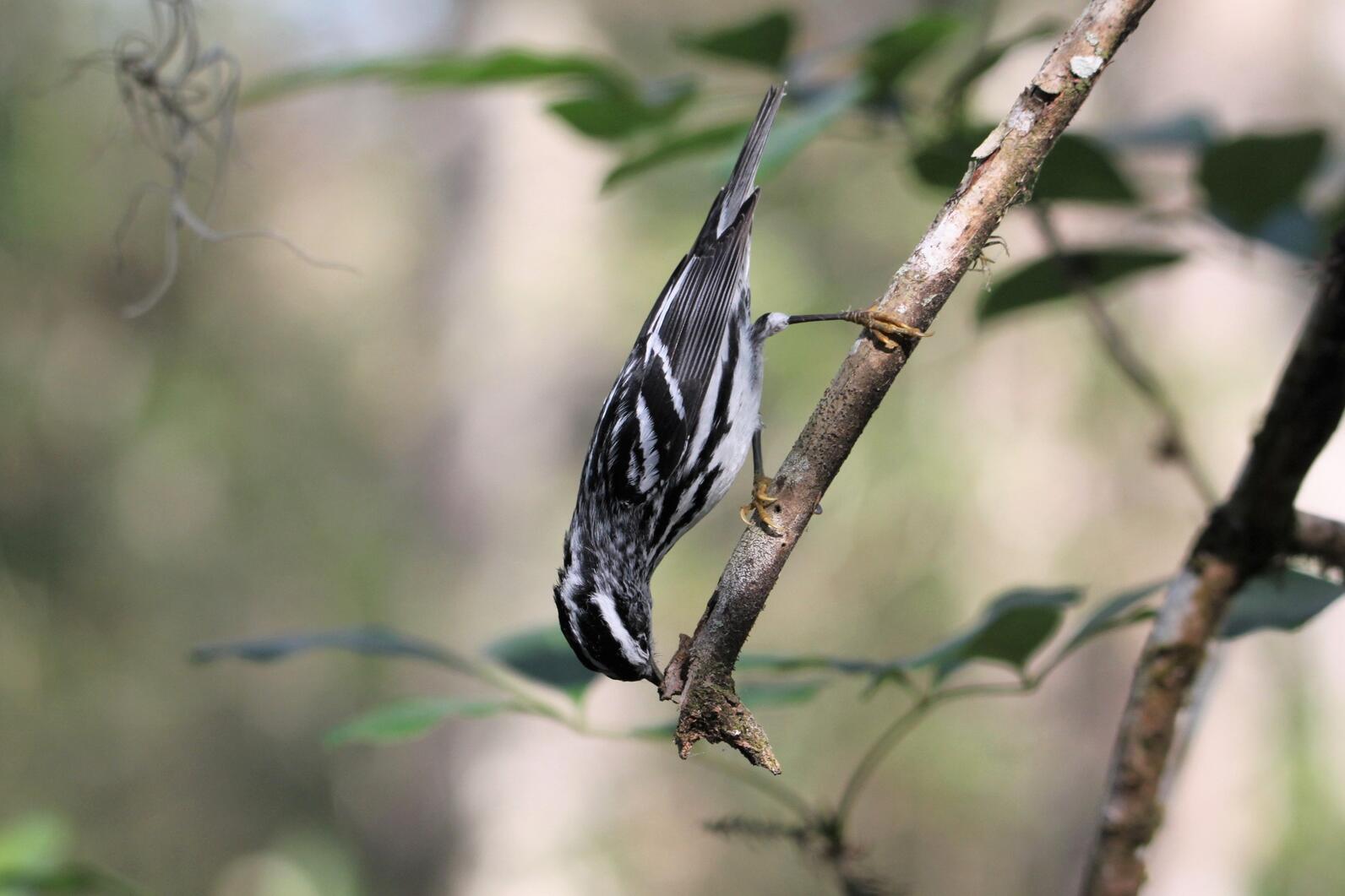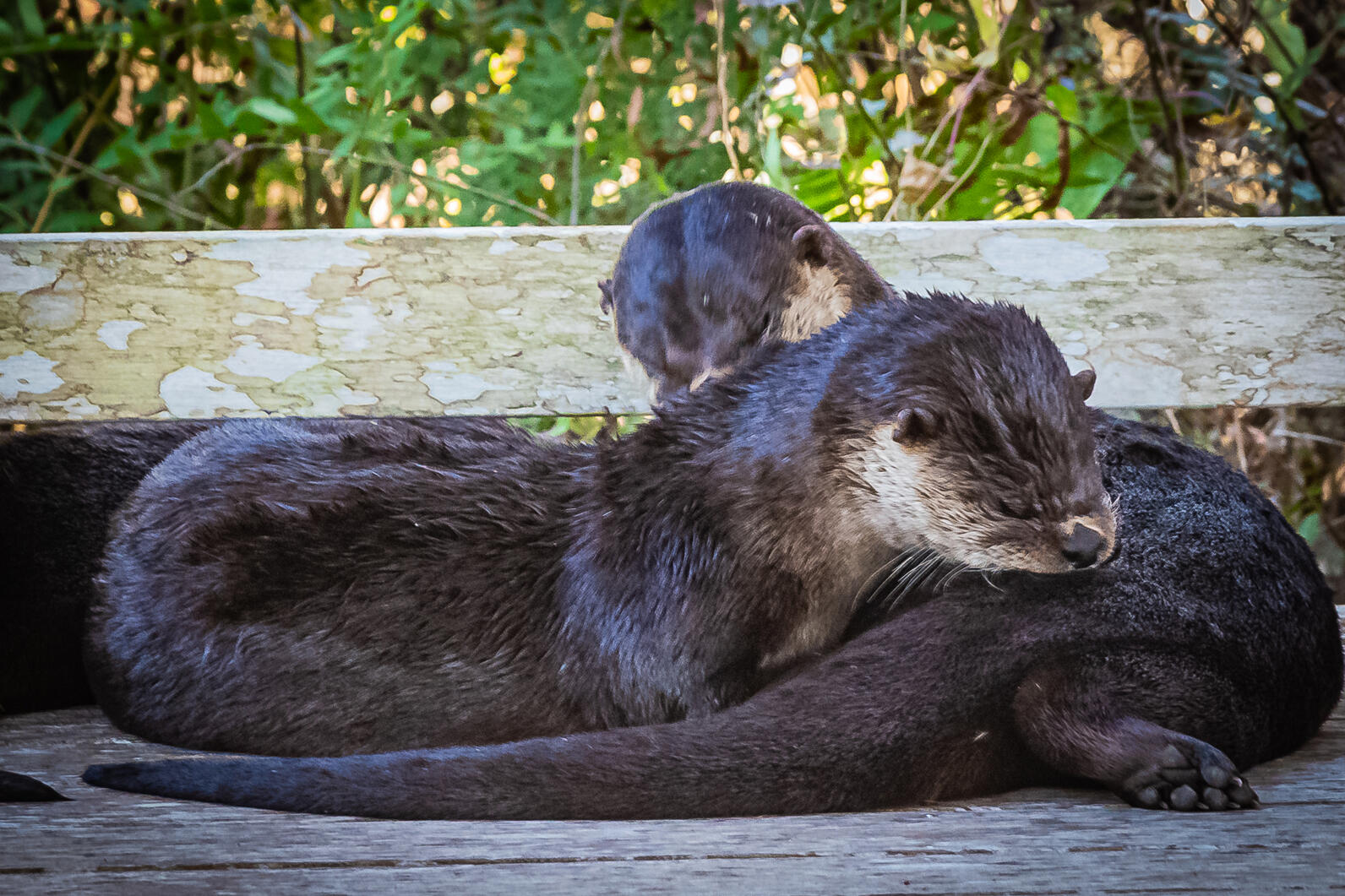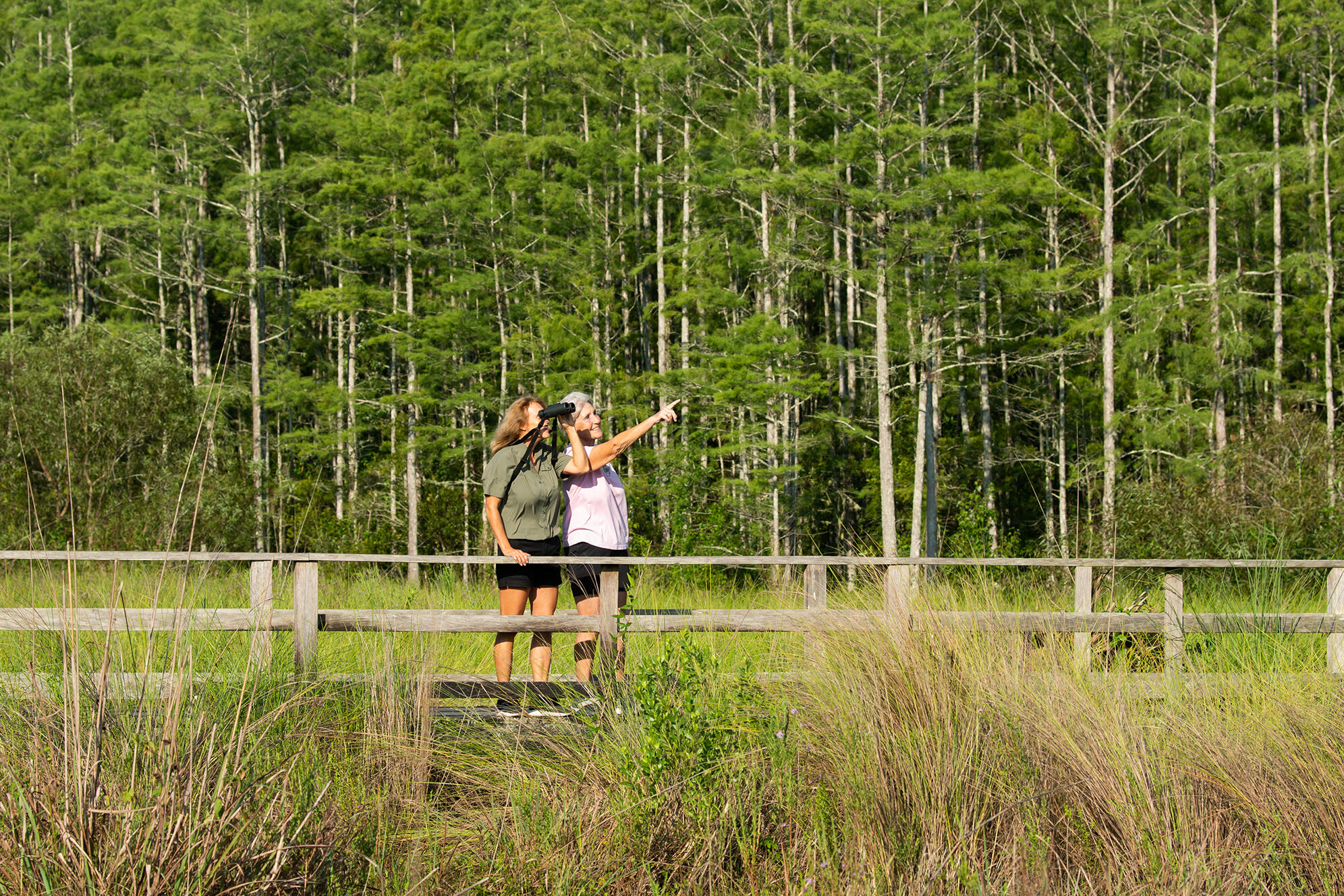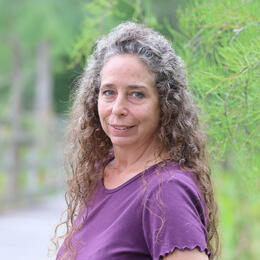You’ve arrived! You have your binoculars and field guide and are ready for an adventure on the 2.25-mile boardwalk. Want to know what you might see? It depends on the season. Online tickets are recommended.
Spring
Spring marks the end of the dry season and is when water levels are at their lowest. By April, fish are trapped in small pools and a diverse assortment of wading birds feast on the concentrated fish. This is the best time to spot Tricolored Herons, Little Blue Herons, Wood Storks, and Roseate Spoonbills at the Lettuce Lakes. You might even catch a glimpse of the cryptically colored, migratory American Bittern. Alligators, turtles, otters, and other animals are now moving around in search of deeper pools and easy meals.
Spring is also the time when families are active along the boardwalk. Barred Owls and Red-shouldered Hawks are known to nest nearby, and visitors sometimes spot adult hawks carrying food to their nests. Barred Owlets emerge from their nest cavities, explore the canopy, and are sometimes heard calling out to their parents for food. Visitors might also see a mother raccoon and her kits foraging along or under the boardwalk, where receding water exposes new morsels.

Many flowers begin to bloom in spring in the pine flatwoods and cypress forest. Look for various orchids that bloom this time of year, including leafless beaked, dingy flower, and cigar orchids.
Summer
In May and June, as summer rains begin, dozens of dazzling scarlet rosemallow blossoms pop open amongst the marsh grasses along the edges of the wet prairie. Butterflies are everywhere, including ruddy daggerwings, sulphurs, queens, and Palamedes swallowtails. Look for them in the pollinator garden in front of the Blair Visitor Center and all along the boardwalk.
July is when the first blossoms on the “Super” ghost orchid typically appear. Ghost orchids are rare plants that only live in South Florida and Cuba. Our famous ghost orchid has multiple blooms throughout the summer and usually finishes blooming in September. It is located about one mile from the Blair Visitor Center, past the shortcut trail on the main boardwalk loop (toward the observation tower). There is a sign on the rail to help you locate the orchid. You will need binoculars to see the flowers if it is blooming. Also visible are Swallow-tailed Kites that start their southward migration in late July and soar overhead in decent numbers.

In early August, songbird migration begins. Some of the earliest migrants spotted at the Sanctuary include Louisiana Waterthrush, Black-and-white Warblers, and Prothonotary Warblers. In August you might also spy yellow helmet orchids (also known as greater yellowspike orchid) and Florida star orchids in bloom.
The water level in the swamp usually reaches peak level in September, sending fish and predators, like wading birds and alligators, far and wide and away from the boardwalk.
Fall
By October, fall migration is in full swing. Painted Buntings and Indigo Buntings are some of the more colorful species spotted by visitors in the pollinator garden as well as on the bird feeders behind the Blair Visitor Center. It's also likely you’ll spot Common Yellowthroats, Gray Catbirds, and American Redstarts along the boardwalk as well as Ruby-throated Hummingbirds sipping from alligator flag flowers.
One of the most amazing sights to behold in early October, however, doesn’t have feathers. Southeastern sunflowers bloom by the millions along the boardwalk in the wet prairie. This fall annual is an important food source for birds and pollinators.
Other fall bloomers include the jinglebell orchid (also known as the threadroot orchid) and the clamshell orchid. Red maples turn red and bald cypresses begin to drop their needles as the winter dry season sets in.
From November through early January Purple Gallinules forage in the flag pond along the entrance trail feeding on the seeds of alligator flag. while wading birds increase their presence along the boardwalk.
Winter
In February, river otters often play in the Lettuce Lakes and even romp on the boardwalk. They are found throughout Florida and make their homes in large burrows on the banks of bodies of water or under tree roots. If you encounter any otters, be sure to give them space.
Late February is when beautiful Swallow-tailed Kites make their way back to Florida each year from South America for their summer breeding season—a veritable sign of spring in Florida. Look for kites flying above the boardwalk in the wet prairie.
By March, the cypress canopy begins to burst with lush green needles, restoring splashes of color and shade to the boardwalk.
Year Round
Across the seasons, our ancient bald cypress forest is always an amazing sight to behold. Related to the giant redwoods of the west coast, bald cypress trees can grow upwards of 100 feet tall. Sixty of the trees inside the Sanctuary have been growing long enough to reach at least 17 feet in circumference, with one measuring 24 feet around – the length of roughly five humans hugging this tree! Scientists estimate some of our giants at more than 535 years and among the oldest living things in our state.
Carolina Wren, Pileated Woodpecker, and Northern Cardinal are a few of the resident bird species that are likely to be seen or heard, while Limpkins and Black-bellied Whistling Ducks are also exciting possibilities.
Whenever you’re here, you’ll find nature everywhere you look. Get tickets.







